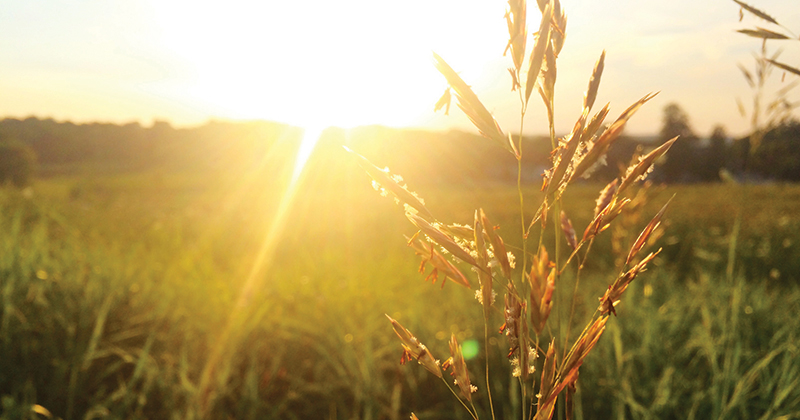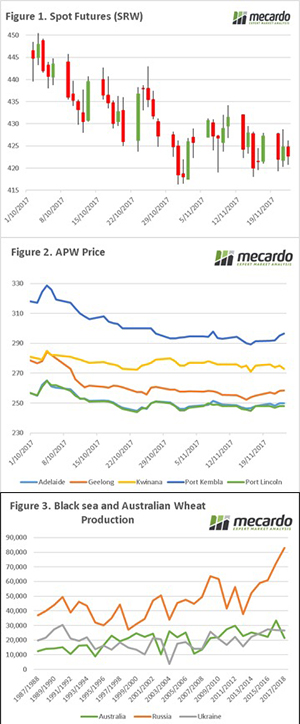Russian wheat crop- growing or glowing?


The Chicago futures market was closed for the thanksgiving holiday, causing the market to be quiet. In this update we take a look at pricing, and radioactive issues in Russia. We know the Russian crop is growing, but is it also glowing?
The markets were quiet this week, as they celebrate thanksgiving in America. In figure 1, we can see that the futures market continues to trade in a narrow range of around 10¢/bu (A$5/mt). The lack of fresh news is likely to continue trading this range for the rest of this year, with the worlds production now largely locked in.
The one piece of potentially bullish news, is the BOM prediction of a La Nina event over the summer. They are predicting that this event will be weak, and likely to lead to heatwaves in eastern Australia as opposed to the usual La Nina effect of wetter conditions. Typically, a La Nina event can cause dry conditions in the US cropping belt (see map), however is unlikely to have a significant impact unless it continues through into our Autumn.
The local harvest is not without its issues, we have seen hail in Esperance & rain in SA/VIC challenging farmers patience. The pricing around the country has flatlined, with little in the way of movement since the beginning of November (figure 2). Interestingly, the major frost event in the western districts of Victoria has had little in the way of impact on the Geelong price. The question will be whether there is enough grain to avoid a price rise, or is the trade underestimating the impact?
The Russian crop continues to place pressure on the wheat market, with black sea origin wheat winning nearly every tender since September. In figure 3, the wheat production from Ukraine, Russia and Australia are plotted since 1988. It is clear that the advancements in the Russian crop through a combination of opening new land, agronomy and technology have led to a stratospheric rise in production.
It is growing, but is it also glowing? It was revealed that a radioactive substance ‘Ruthenium 106’ had been detective in the Ural Mountains at 1000 times higher than normal levels. This indicates the likelihood of an incident at a Russian nuclear facility. It is expected that although high levels, that it is not at the degree to impact lives. There were rumours of traders covering short positions, as this news developed. However, it is unlikely that this event will cause a huge impact to the Russian grain machine.
Here’s a joke for the weekend:
What did the nuclear physicist have for lunch?
Fission chips
I don’t envisage the market reacting to the Russian radiation story, so I wouldn’t be hoping for a price rise based on this.
The futures market is likely to continue treading water next week, as there are limited drivers in the market. At a local level basis levels remain small, but there could be potential for price rises in Geelong as a result of the realisation of the extent of the frost damage in the Western Districts.


